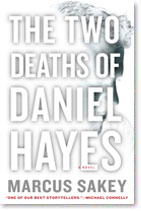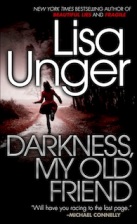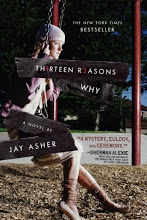Today Tiffany Lawson Inman is continuing the discussion of the emotional barrier in fiction. If you missed Part One from last month, click here.
Hello again!
We learned in Part One of this post, that the emotional barrier is VERY IMPORTANT, and very hard to break down without completely collapsing in on ourselves. We are all afraid of icky gooey stuff that seeps out when we are alone, and it takes skill to use the memories and gut-wrench that is on the other side, right?
Right.
And comedians like Louis C.K. have the ability to rip truths out of the air and make them tangible, right?
Right.
And you all are going to do whatever you can to:
- allow yourselves emotional release.
- learn how to cross your emotional barrier.
- learn how to use the emotions you can reach.
- be fearless and vulnerable when using your own emotions.
- realize that emotions are one of the most important factors in fiction.
- unplug from technology every so often to reconnect with yourself, people, and life.
- write truthful human emotions and create a strong connection between your readers and characters.
RIGHT!
If you need a reminder, or didn’t get to read Part One, head on back to Wednesday’s post, Part One: Emotional Barrier in Fiction. Why is it so important for you to learn how to cross it? and we will see you back here in a sec.
Moving on to the meat.
Let’s assume that you have all either gone to a psychotherapist, been on stage, or have taken my class, From MADNESS to Method: Using acting techniques to invigorate your story and make each moment Oscar worthy! and can cross the emotional barrier with ease. *wink wink* And what you have found on the other side is absolutely amazing and totally usable for your fiction and you are raring to jump to the BIG emotional scenes in your novel and write write write!
No. I won’t let you. Not yet.
First, we have to make sure your characters have a solid emotional base to jump off of, emotions to fly by, emotional places to visit, and an emotional crash pad. Donald Maass calls this an emotional landscape in Chapter Three of Writing 21st Century Fiction:
“To foster reader involvement it is first critical to map an emotional landscape which readers will travel. Readers must feel that they are on a journey, one with felt significance and a destination that we can sum up as change.”
Yes, your character has to start somewhere emotionally in order to have a journey. You can’t just plop them on the page and start writing events, plot points, outer conflict, and black moments without having an inner conflict jumping off point. Starting with action is fun. Starting with dialogue, also fun. But watch out, if the reader doesn’t know where your character is emotionally in the first few pages, their need to read on wanes. And if you, the writer doesn’t start out by mapping this emotional landscape, then you might end up writing the wrong level and wrong angle of emotion in those BIG scenes.
Let’s see how Lisa Unger starts her emotional landscape in Darkness, My Old Friend:
Failure wasn’t a feeling; it was a taste in his mouth, an ache at the base of his neck. It was a frantic hum in his head. The reflection of failure resided in his wife’s tight, fake smile when he came home at the end of the day. He felt the creeping grip of it in her cold embrace. She didn’t even know the worst of it. No one did. But they could all smell it, couldn’t they? It was like booze on his breath.
****
Wow, this guy is in a really good place in his life right now…. Sorry, couldn’t resist the sarcasm because it is painfully obvious he is on the wrong side of the happy-go-round.
Lisa Unger gives us one heck of an emotional base for this character:
- Failure that leaves a taste in your mouth. That’s not a little failure, this, is a lot.
- He can physically feel this emotion in his neck and head.
- His wife fakes a smile at him.
- Cold embrace means there is a lack of love and affection between them.
- He tells us that all of this isn’t the worst of it, which means, this man has a BIG BAD secret.
All of this in the very first paragraph of the novel.
Unger used emotive words like:
- Failure
- Ache
- Frantic
- Tight
- Fake
- Creeping
- Grip
- Cold
- Worst
- Smell
- Booze
We don’t have to hear the sirens to know the lights are flashing in this character’s future meltdown. We know this character is bad news and we want to see how bad it gets. How many other characters can he take down with him? Or, will there be a surprise? Reader interest is definitely sparked and it’s because she started with emotion.
What if she had written:
Kevin felt like a failure. It made his neck tense and his head hurt. When he went home to his wife, she pretended she was happy he was home. They didn’t have much sex anymore. Probably for the best because he had a secret he hadn’t told anyone and it would probably affect their relationship.
Blah blah blah! My version opened the door for an emotional base, but it didn’t really let the reader in. Not a good way to start a book.
Okay okay, some of you think I cheated by showing the prologue, am I right? Because the prologue is supposed to be thick with emotion? I agree. But I couldn’t not show you that, because I just think it’s a tasty start to a story.
Unger brings the emotional jack-hammer in Chapter One as well. Here you go:
Chapter One
Jones Cooper feared death. The dread of it woke him at night, sat him bolt upright and drew all the breath from his lungs, narrowed his esophagus, had him rasping in the dark. It turned all the normal shadows of the bedroom that he shared with his wife into a legion of ghouls and intruders waiting with silent and malicious intent. When? How? Heart attack. Cancer. Freak accident. Would it come for him quickly? Would it slowly waste and dehumanize him? What, if anything, would await him?
****
See! Told you. Lisa Unger rocks at setting up the emotional landscape. I have NO doubt that she is a frequent traveler across her own emotional barrier.
Part of Cooper’s inner conflict that we can see right away:
- Will he live the rest of his life being afraid, allowing it to affect every day until a coffin surrounds his body?
- Will he surpass his fear and surprise us at every turn?
What if she had written:
Jones Cooper woke up most nights with an extreme fear of death.
My version doesn’t have the same rhythm, cadence, intensity, or emotional resonance does it?
LOL, nope.
*Ah, before I go on, if you didn’t know already, if you have a Kindle, or a Kindle app, you can download a sample of most books on Amazon. It’s usually the first two chapters. This is a great way to see (and afford to see) all of your favorite authors and how they emotionally hook you in those two chapters. Unfortunately when a writer is as good as Lisa Unger, there is really no point in just reading the first two chapters, you simply must read the whole book. So head on over and read the rest (after you are finished reading this blog, of course). The prologue alone is worth its weight in gold.
Up next, Markus Sakey and the first few paragraphs of The Two Deaths Of Daniel Hayes:
 He was naked and cold, stiff with it, his veins ice and frost. Muscles carved hard, skin rippled with goose bumps, tendons drawn tight, body scraped and shivering. Something rolled over his legs, velvet soft and shocking. He gasped and pulled seawater in to his lungs, the salt scouring his throat. Gagging, he pushed forward, scrabbling at dark stones. The ocean tugged, but he fought the last ragged feat crawling like a child.
He was naked and cold, stiff with it, his veins ice and frost. Muscles carved hard, skin rippled with goose bumps, tendons drawn tight, body scraped and shivering. Something rolled over his legs, velvet soft and shocking. He gasped and pulled seawater in to his lungs, the salt scouring his throat. Gagging, he pushed forward, scrabbling at dark stones. The ocean tugged, but he fought the last ragged feat crawling like a child.
As the wave receded it drew pebbles rattling across one another like bones, like dice, like static. A seagull shrieked its loneliness.
His lungs burned, and he leaned on his elbows and retched, liquid pouring in ropes from his open mouth, salt water and stomach acid. A lot, and then less, and finally he could spit the last drops, suck in quick shallow lungfuls of air that smelled of rotting fish.
In. Cough it out. There. There.
His hands weren’t his. Paler than milk and trembling with panicky violence. He couldn’t make them stop. He’d never been so cold.
What was he doing here?
****
From a quick first glance it seems as though these are all physical issues Sakey is giving his character. But if you take your pulse before you started reading this and after, you would most definitely have a difference in tempo. This character is half dead and struggling to survive. He gives us some great images and metaphors to show emotion here.
- Crawling like a child.
- Pebbles rattling like bones.
- Seagull shrieking its loneliness.
- Trembling with panicky violence
- “Cough it out. There. There.” As if he’s consoling a child, or his mother is there consoling him.
Not to mention ALL of the power words he uses. I’m pretty sure you can point them out. Too many to list!
Part of this character’s initial inner conflict:
- Will he struggle to crawl out of the ocean to face whatever put him there in the first place?
- Will he give up and die?
Hmmm… . I keep talking about inner conflict, Donald Maass defines it as follows:
“…don’t confuse inner conflict with inner turmoil, a messy indecision, waffling, and weakness that turns readers off. Inner conflict is dilemma. A debate that can’t be won, an unavoidable fork in a road that leads to two equally feared or desired destinations. It’s a predicament that’s powerfully human.”
I love that. “…powerfully human.” Lisa Unger and Markus Sakey have done a brilliant job of showing a well defined inner conflict, and they have both done it on the first page!
Do you have to show a defined inner conflict on the first page?
No.
But if you are starting with deep POV, the emotion had better be there and inner conflict better be right around the corner (like on one of the next three pages.) If you are starting off with action and dialogue, then we should have a sense of your character’s beginning emotional state. Here’s a good example. I am currently reading Thirteen Reasons Why by Jay Asher.
“Sir?” she repeats. “How soon do you want it to get there?”
I rub two fingers, hard, over my left eyebrow. The throbbing has become intense. “It doesn’t matter,” I say.
The clerk takes the package. The same shoebox that sat on my porch less than twenty-four hours ago; rewrapped in a brown paper bag, sealed with clear packing tape, exactly as I had received it. But now addressed with a new name. The next name on Hannah Baker’s list.
“Baker’s dozen,” I mumble. Then I feel disgusted for even noticing it.
“Excuse me?”
I shake my head. “How much is it?”
She places the box on a rubber pad, then punches a sequence on her keypad.
I set my cup of gas-station coffee on the counter and glance at the screen. I pull a few bills from my wallet, dig some coins out of pocket, and place my money on the counter.
“I don’t think the coffee’s kicked in yet,” she says. “You’re missing a dollar.”
I hand over the extra dollar, then rub the sleep from my eyes. The coffee’s lukewarm when I take a sip, making it harder to gulp down. But I need to wake up somehow.
Or maybe not. Maybe it’s best to get through the day half-asleep. Maybe that’s the only way to get through today.
****
While we don’t know exactly what his inner conflict is yet, we have a ton of emotional hits and can get a pretty clear idea of what his emotional state is on the first page.
- Asher starts the character in the middle of…something, and the character isn’t even paying attention. His mind is obviously elsewhere.
- He’s rubbing his brow. Hard. A sign of emotion when coupled with the fact that he is having a hard time paying attention.
- Throbbing in the brain is never a sign of something good.
- Character says he doesn’t care.
- Character mumbling to self, disgusted at self.
- Not paying attention again when he shortchanges her.
- Rubbing sleep from eyes. Normal action when you are getting out of bed, but this guy is already at the store with coffee in hand. Sign that sleep didn’t come easy if at all the night before.
- Thinking that the only way to get through this day is to do it half asleep. Another clue that something crappy is going on in his life and it occupying his thoughts.
Have you noticed that even though these aren’t the BIG emotional scenes (that I won’t let you write yet without supervision) they are still stuffed with emotion? ALL of that work that you did to cross the emotional barrier and everything you brought back with you WILL BE USED. Some of it in slivers here and there to help guide the reader on the emotional journey, and some of it in the BIG scenes.
But you can’t afford to save the whole bundle for that one BIG turning point, it won’t matter to the reader how much is in that scene, if they don’t know where the emotional journey started.
In the online course I teach, I work with writers to infuse emotion into their little moments as well as the big ones. Because so much can be shown in a “simple” scene between husband and wife over breakfast, getting dressed for the day, a phone conversation with your best friend, getting into a taxi, giving someone a gift, etc. These little emotional hops, skips, and dips might seem tedious to the emotional beginner, or be viewed as mushy gushy bits of language that could slow pace or veer your scene into a ditch, but as you can see from the above examples, pacing is not dropped and there aren’t any ditches.
Their writing is active.
And their writing is good!
****************
Thank you so much for reading today! Stay tuned for Part Three! Let me know if you have any questions. I won’t be teaching again until next summer, so I apologize, I can’t give any classes away today.
There are many MANY authors out there with the ability to beat down emotional barriers with ease and skill. Got a favorite?
~~~~~~~~~~~~~~~~~~~~~~~~~
Tiffany Lawson Inman claimed a higher education at Columbia College Chicago. There, she learned to use body and mind together for action scenes, character emotion, and dramatic story development. Tiffany’s background in theatre provides her with a unique approach to the craft of writing, and her clients and students greatly benefit.
She teaches Action and Fighting, Choreography, Active Setting, Emotional Impact, Scene Writing, and Dialogue for Lawson Writer’s Academy online.
As an editor, she provides deep story analysis, content editing, line by line, and dramatic fiction editing services. Stay tuned to Twitter @NakedEditor for Tiffany’s upcoming guest blogs around the internet, classes, contests, and lecture packets.





I think I’m getting better at this…it’s hard to let go when writing from the POV of a really bad guy (because I’m a sweet grey-haired lady who’d be terrified by my own characters), but crossing that emotional barrier was useful…and almost a bit too revealing about my inner thug. 😀
Patricia, you can and will be able to push your characters into a greater and deeper reality by using your own emotions, no matter what kind of bad guy or fairy princess you are writing. It takes a bit of courage and practice, for sure!